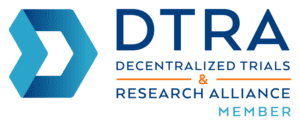
With high overhead and low profit margins for research sites, it’s vital to streamline processes and reduce the workload associated with maintaining regulatory compliance. Sites that maintain paper regulatory binders instead of adopting an electronic system are missing out on increased efficiency, cost savings and improved regulatory compliance. The following are reasons for sites to ditch the paper and go electronic.
The relentless regulatory burden on sites. The regulatory burden on sites is growing but budgets with sponsors and CROs aren’t keeping up. Paper-based regulatory processes only exacerbate the problem. Going electronic can eliminate or reduce most of the clerical tasks associated with paper (e.g., printing/filing/scanning records, managing correspondence, preparing for audits/inspections, and reviewing documents with monitors.). Instead of searching, scanning and emailing records to monitors, wouldn’t it be nice if monitors simply accessed critical records through a remote web-portal?
The need for improved regulatory compliance. With compliance-ready electronic systems, sites can immediately adopt processes that improve regulatory compliance across all studies. With the efficiency created by an eRegulatory system, sites will be audit-ready from study startup to closeout and beyond.
Standardized filing creates efficiency. When working with multiple sponsors/CROs, each regulatory binder will have a unique way of filing paper records. With an eRegulatory system, sites regain control of their processes to standardize their filing system and create efficiency across all studies.
Centralized filing will reduce redundant work. Are you tired of having to file the same CV, medical license, or training record across multiple studies? If you choose the right eRegulatory system, this task will be a thing of the past. Simply upload the record one time and have it automatically filed across assigned studies. The same can be achieved with site level documents, such as temperature logs and equipment calibration records.
Electronic signatures will streamline your processes. Electronic signatures will dramatically increase efficiency for sites. No longer do we have to hunt down wet-ink signatures from doctors and staff. Some sites literally mail documents using “snail mail” and have to wait for the record to be mailed back to obtain signatures. Other sites are having to drive around the city visiting various doctor offices. Let’s stop the signature madness and go electronic to save time, money and hassle.
It’s time to eliminate Houdini records. At some point, we’ve all had to thumb through a paper regulatory binder trying to locate a document that may or may not have been properly filed sometime within the last 1 to 100 years? It’s very common, especially during audits and inspections, to discover paper records missing without explanation. The great news is that electronic files don’t go missing once they have been uploaded into a Part 11 compliant eRegulatory system.
Opportunity cost can kill your business. Let’s face it, if your staff isn’t recruiting patients for studies and conducting study visits, it’s hard to stay in business. With the right eRegulatory system, your staff will spend less time filing records and more time generating revenue. Even if your site utilizes dedicated regulatory staff, there is opportunity for them to easily manage more studies using an eRegulatory system.
Purchasing materials and archiving paper records is costly. It’s not cheap purchasing paper, ink, binders, copy machines and more to keep a research site in motion. Add up the materials, I dare you. It’s also no small feat to box and label records to store either onsite or offsite, both of which are costly methods of long-term storage. Every site I have worked for has literally had to round up a group of employees to stay late at work organizing and archiving paper records. Reduce the need for materials and eliminate “late night archiving parties” with your staff by going electronic.
It’s win-win for everyone. Electronic systems aren’t just for large sites looking to streamline processes and reduce overhead. Small sites can realize the same benefits. In fact, smaller sites utilizing an eRegulatory system will be much more prepared for growth as more research studies come through their pipeline. In addition, sponsors and CROs also benefit from site-centric eRegulatory systems. Through web-portal access, they can easily monitor records from anywhere with an internet connection, saving them time during site visits and reducing travel costs.
Paper binders are completely useless. Paper-based regulatory binders are now useless given the technology available to research sites. I take that back, if you stack your regulatory binders perfectly, you can create towers and walls which can be used to build forts for playtime. Even then, you have created an extreme safety hazard and your HR department will not be happy.
It’s my belief that paper binders are the “dinosaurs” of clinical research and should remain in the past. With our site-centric eRegulatory system, RealTime-eDOCS, it’s now easier than ever to trade these ancient paper wasting dinosaurs for an efficient electronic system. Learn how other sites are ditching their paper regulatory binders and moving towards electronic freedom by visiting our website to learn more about RealTime-eDOCS. Better yet, contact us for an online demo to see the system in action!






